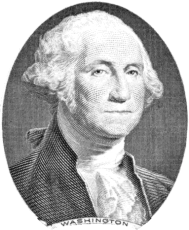Official issued proclamation against Penobscot Indians in 1755
By Roxanne Moore Saucier
The document declared the Penobscots “Enemies, Rebels, and Traitors to his Majesty King George the Second.” It “required” his Majesty’s Subjects “to embrace all opportunities of pursuing, captivating, killing and Destroying all and every of the aforesaid Indians.” It further stated that a bounty had been voted by the General Court of the Province, promising 25 pounds for a female Penobscot of any age or a male Penobscot under age 12, and 50 pounds for a Penobscot male over age 12. Scalps of Penobscots under 12 would earn a little less, 20 pounds.
The document may be found on the Abbe Museum website at http://www.abbemuseum.org/phips_bounty.html. The page refers to “Documentary History of Maine,” Baxter Manuscripts, Vol. 24 Page 63, and also the Androscoggin Historical Society at http://www.rootsweb.com/~meandrhs.
So in addition to taking land and spreading disease and paying Native Americans such as Loring to share stereotypes rather than their real culture, we—the white people, the European descendants—sought scalps.
The year was 1779. In the middle of the American Revolution, George Washington ordered two Generals, John Sullivan and James Clinton, and more than 6,200 men--roughly 25% of the entire rebel army--to clear-cut and burn these resisting or then neutral Iroquois nations from one of Earth’s most fertile regions. They should “not merely be overrun," Washington insisted, “but destroyed.” And England, for its part, couldn't and/or wouldn't send forces enough to defend its Indian allies' homelands against the Sullivan-Clinton Campaign.
After five days in April and four weeks in September, almost all of Iroquoia was reduced to shattered hearths and fields of fire. According to Sullivan’s Official Report, the army burned 40 towns and their surrounding fields; consuming at least 160,000 bushels of corn, “with a vast quantity of vegetables of every kind.” A study (1969) by Anthony Wallace concluded that the Campaign destroyed 500 dwellings and nearly 1 million bushels of corn. Drawing on extensive records, a history (1978) by Allan Eckert estimated at least 50 towns and nearly 1,200 houses were burned. All this before the worst winter in recorded memory.
While these figures vary, all show an earth-shaking defeat for America’s native peoples that cannot truly be expressed in numbers; one that still lingers today--often hidden in plain sight or deep in people's souls. Against this background, a hard-won foothold in NY and Rebirth of Iroquoia have been well underway...


No comments:
Post a Comment